Although The Hague is obviously not the capital of the Netherlands, this culture-packed city is the nation’s administrative centre, the main home of the king and also hosts most of its foreign embassies.
The Medieval Binnenhof is the oldest house of parliament in the world still in use, while the UN’s International Court of Justice and the International Criminal Court are famously based in The Hague at the Peace Palace.
The city is almost inundated with art by Dutch Masters and modern trailblazers like Piet Mondrian, at the world-class Mauritshuis and Gemeentemuseum.
The Hague is also tied to the North Sea coast via the Scheveningen district, which has an alluring sandy beach and all the fun of a seaside resort in summer.
1. Mauritshuis
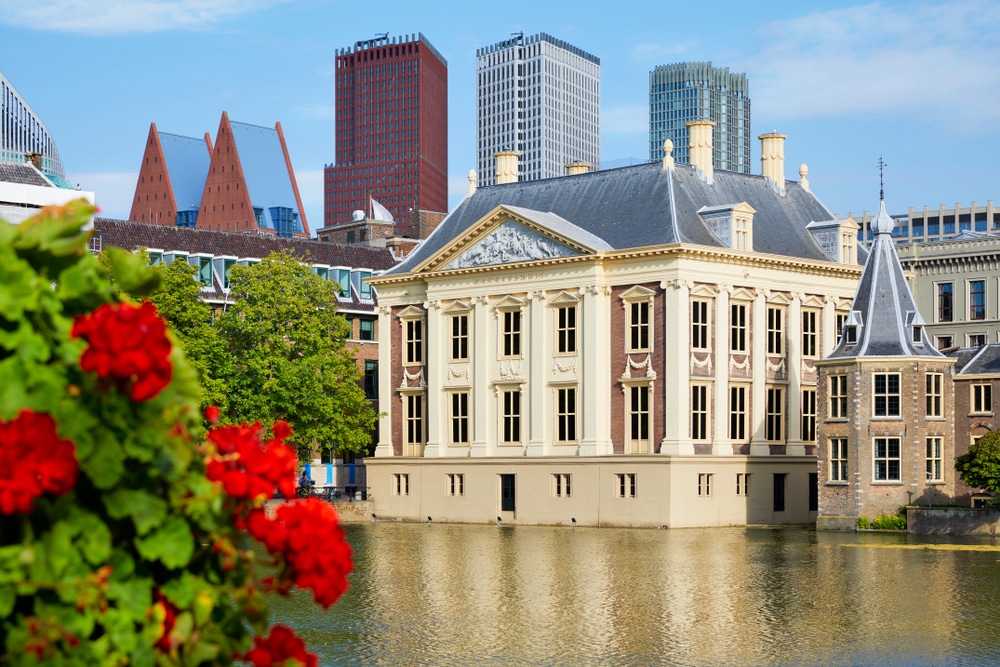 Source: R. de Bruijn_Photography / shutterstock
Source: R. de Bruijn_Photography / shutterstockIn the argument for the best art museums on the planet, the Mauritshuis is definitely up there with a big helping of Dutch Golden Age art in the theatrical 17th-century residence built for count John Maurice of Nassau.
This is the home of the Royal Cabinet of Paintings, comprising 841 mostly 17th-century paintings by the likes of Rembrandt, Frans Hals, Rubens and Johannes Vermeer.
One painting known to all is Vermeer’s Girl with a Pearl Earring (1665), while Rembrandt’s Anatomy Lesson of Dr. Nicolaes Tulp (1632) and The Goldfinch by Fabritius (1654) have almost universal renown.
These masterpieces hang in small, personal rooms exuding the wealth of the Golden Age with chandeliers and silk wall hangings.
2. Gemeentemuseum
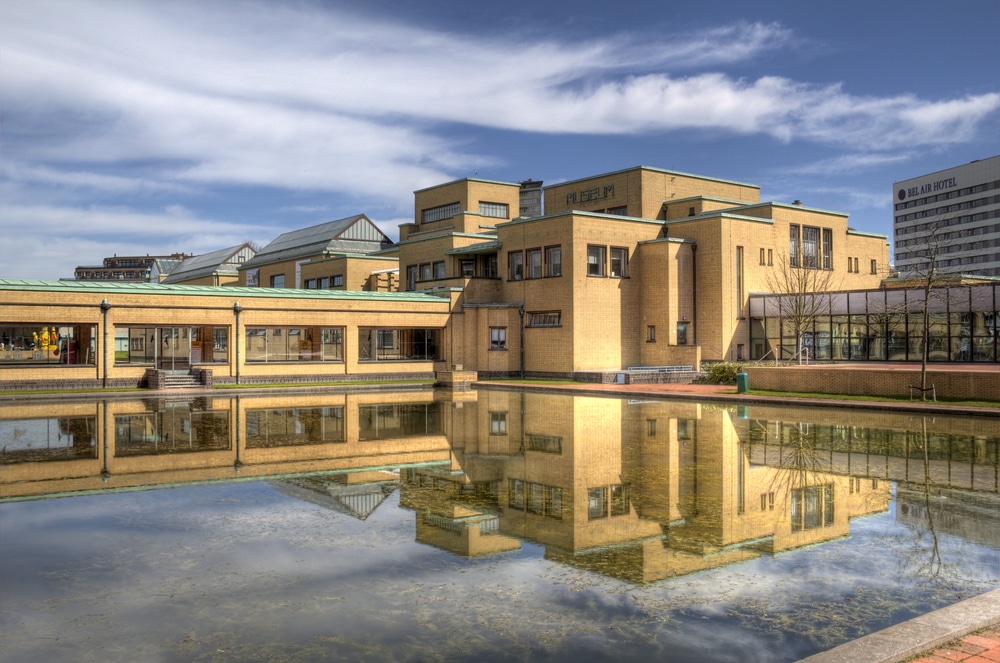 Source: jan kranendonk / shutterstock
Source: jan kranendonk / shutterstockEven before you step inside, the Hague’s municipal museum is something to behold.
Well before its time, this fabulous brick building from 1935 is the last work of Hendrik Petrus Berlage, a key figure in Dutch architecture in the early 20th century.
The permanent exhibitions are divided into departments like modern art, fashion, decorative arts, drawing and graphic art.
The world’s largest collection of paintings by Mondrian is on show, as well as works by Monet, Picasso, Schiele, Kandinsky, Degas and a host of other Dutch artists like Vincent van Gogh, Charley Toorop and Johan Jongkind.
The fashion collection is internationally significant, with contributions from Coco Chanel and John Galliano, while there’s a dazzling variety of musical instruments like an extraordinary clavicytherium harpsichord from 1730 by Albert Delin.
The decorative arts displays are phenomenal too, and displayed in cabinets designed by Berlage himself.
3. Escher in the Palace
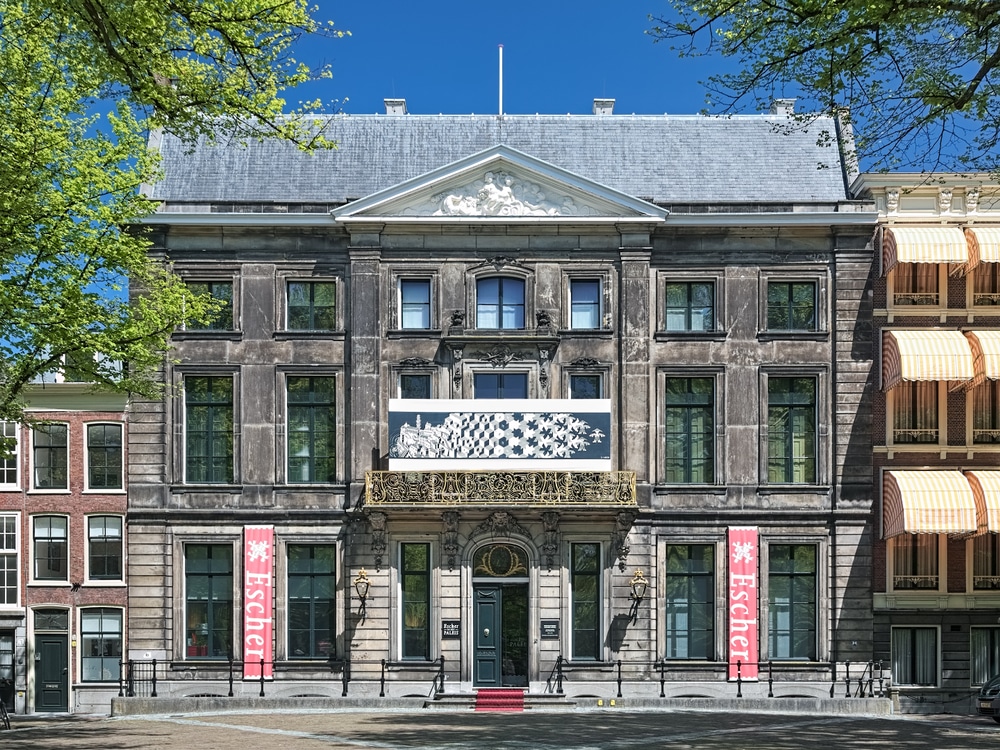 Source: Mikhail Markovskiy / shutterstock
Source: Mikhail Markovskiy / shutterstock
This Neoclassical palace, once the home of Queen Emma, is been given over to the works of the graphic artist Maurits Cornelius Escher.
The master of the optical illusion, Escher produced mind-bending mathematical woodcuts, mezzotints, lithographs and tessellations that could make you question your perception.
These incorporated recognisable figures like humans or animals, or non-organic forms like geometric shapes and unravelling knots.
Amid the never-ending staircases, hands drawing themselves on paper and gravity-defying waterfalls there are biographical details like letters and photographs and early sketches that give you a feel for his creative process.
Give yourself plenty of time to study the woodcut Metamorphosis III (1967-68), Escher’s largest print, where animal patterns endlessly merge with geometric shapes and objects like sailing boats.
The museum’s second floor studies the themes of Escher’s work and lets you compose your own impossible object.
4. Het Binnenhof
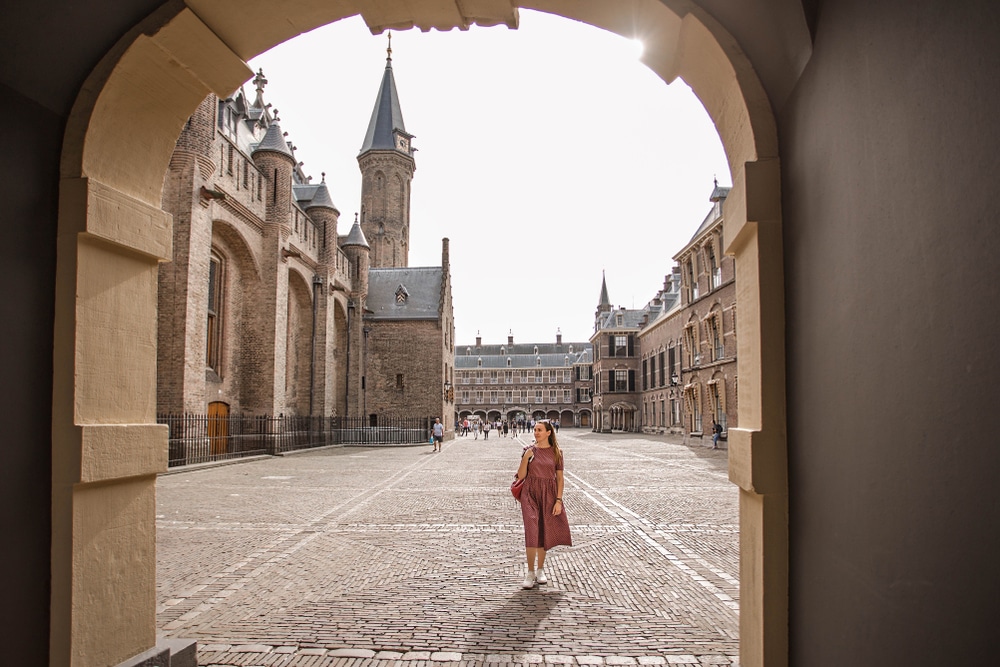 Source: Ale_Koziura / shutterstock
Source: Ale_Koziura / shutterstockThe seat of political power in the Netherlands, Het Binnenhof (Inner Court) is a complex containing both houses (Senate and House of Representatives) of the States General of the Netherlands, along with the office of the Prime Minister and the Ministry of General Affairs.
Dating as far back as the 1200s, Het Binnenhof is the world’s oldest house of parliament that is still in use.
The crowning glory here is the Ridderzaal (Knight’s Hall), built in the 13th and 14th centuries and restored just over a century ago.
This monument now has a mostly ceremonial role, such as when the Dutch monarch gives a speech to open parliament on the Prince’s Day in September.
A surprising amount of Het Binnenhof is open to the public; on a pre-booked guided tour you’ll see an introductory video for context, and will then be shown the Ridderzaal and either the Senate or the House of Representatives.
Get a snap of the ensemble beside the beautiful Hofvijver lake, dating to the 1200s.
5. Peace Palace
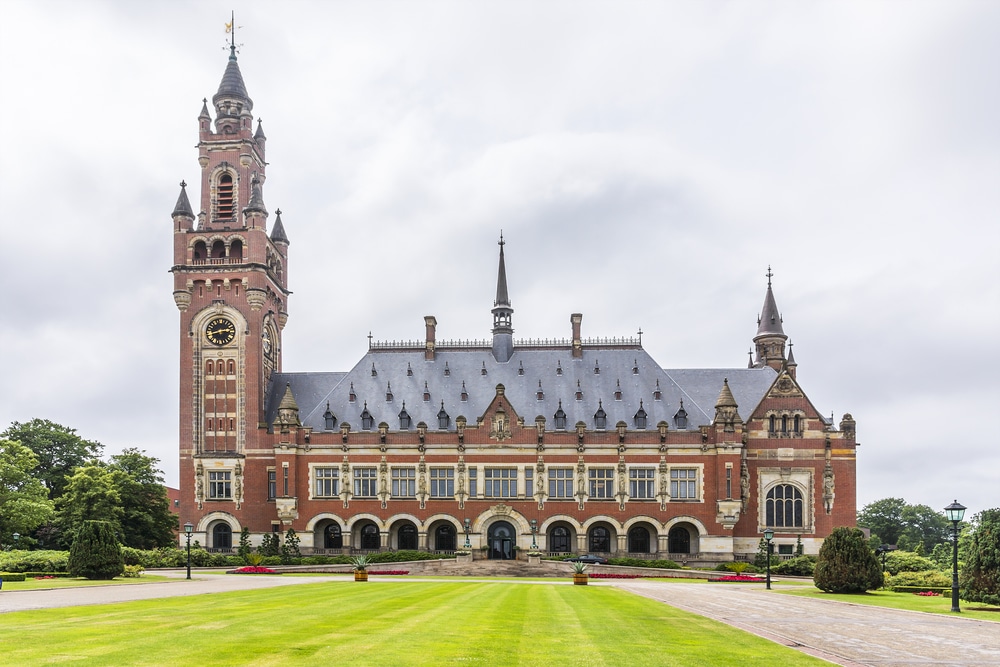 Source: Kiev.Victor / shutterstock
Source: Kiev.Victor / shutterstockGlobally recognised as a monument to peace and justice, the Peace Palace houses the UN’s International Court of Justice and the Permanent Court of arbitration.
The exuberant neo-Renaissance building dates to 1913 and was funded by the Scottish-American steel magnate Andrew Carnegie – since 2002 an eternal peace flame has been burning at its front gates.
Given the role of the building, entrance is restricted, but you can check out the Visitor Centre, open Tuesday to Sunday.
This has a clever exhibition and film detailing the foundation of the Peace Palace and the judicial institutions based inside.
Register in advance and you can take a tour of the building, seeing the Great and Small Halls of Justice and the beautiful Japanese Room.
Tours are limited to certain weekends and a brief, two-week window in the summer.
6. Madurodam
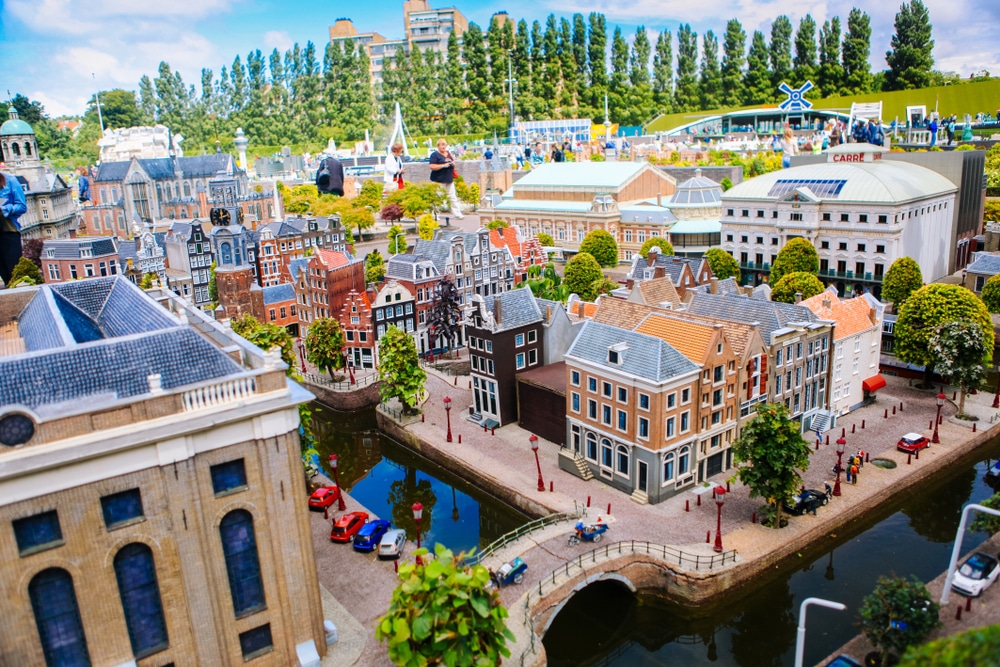 Source: OlenaPalaguta / shutterstock
Source: OlenaPalaguta / shutterstockIn Scheveningen, this miniature world is one big celebration of Holland in 1:25 scale, and even more admirable because all proceeds go to charitable causes.
There are models of the Rijksmuseum, The Binnenhof, the Port of Rotterdam, Schiphol Airport, Amsterdam’s canal houses, windmills, the Delta Works, tulip fields and a lot more.
Where Madurodam excels is in its interactivity; you can open and close the Oosterscheldekering storm surge barriers, lodge a bid at the famous flower auction and stack containers at the Port of Rotterdam.
All the while you’ll be fed enlightening stats and stories about each monument and life in the Netherlands.
The attention to detail is mind-boggling, and even the miniature residents of Madurodam change clothes according to the season.
A very neat touch is the Fantasitron, where a 3D camera will capture your image to turn it into a miniature model that will be sent to you.
7. Lange Voorhout
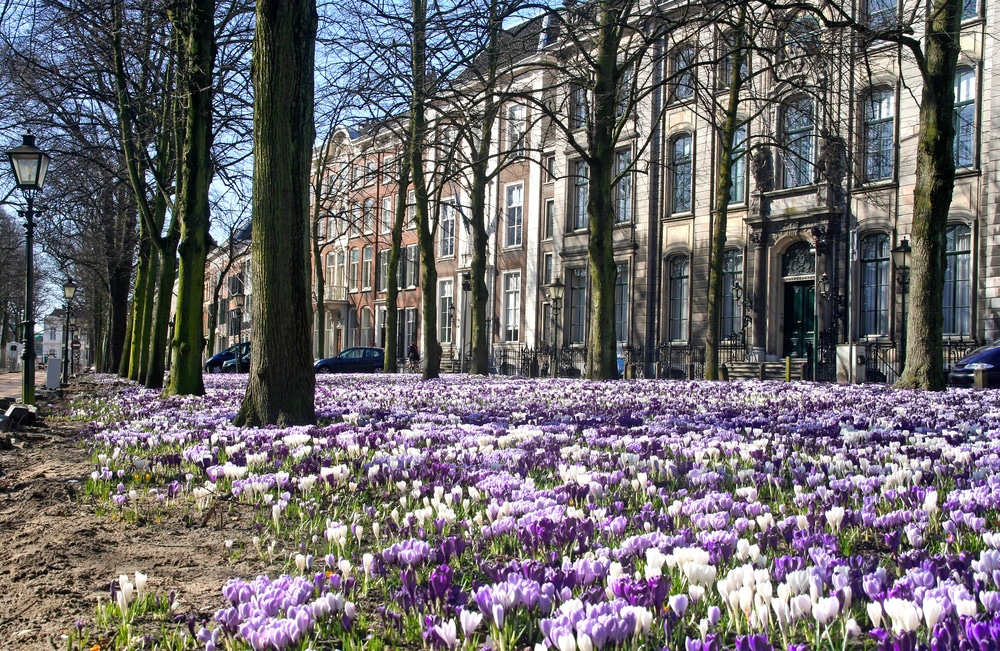 Source: jan kranendonk / shutterstock
Source: jan kranendonk / shutterstockA magnificent L-shaped street with stately architecture and rows of lime trees, the Lange Voorhout runs through the old city centre between Kneuterdijk in the west and Toernooiveld in the east.
From the late-Middle Ages this became somewhere for The Hague’s elite, where courtiers and then statesmen had their homes.
It was Holy Roman Emperor Charles V who ordered a regal boulevard with four rows of lime trees to be laid out in the 16th century.
The grand Neoclassical houses lining the street are generally from the 18th century, and almost all are Rijksmonumenten (national heritage sites). As well as Escher in the Palace and a wealth of other cultural institutions, the Swiss, Spanish and UK embassies are all on Lange Voorhout.
You can also relive the street’s historical splendour every September when the Prince’s Day parade passes through, marking the start of the new parliamentary year.
8. Louwman Museum
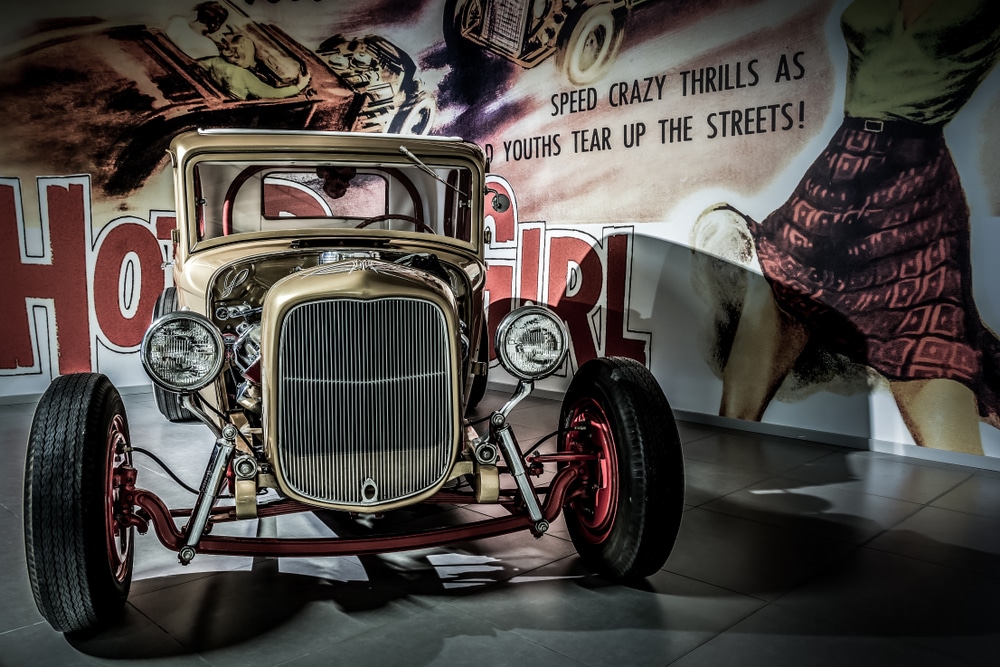 Source: Jolanda Aalbers / shutterstock
Source: Jolanda Aalbers / shutterstockA car connoisseur’s idea of paradise, the Louwman Museum has the world’s largest collection of cars from 1910 or before.
In 2010 it moved into a stunning permanent home on the Leidsestraatweg, one of the final projects by American architect Michael Graves.
The Louwman Collection is also the oldest private collection in the world, begun in 1934 by the Dodge importer Pieter Louwman, who was just 20 years old at the time.
Now made up of more than 230 automobiles, the collection contains some real Dutch rarities like the only remaining car by Eysink and the last 15 Spykers.
There are vintage Bugattis, cars belonging to Elvis Presley (Cadillac) and Winston Churchill (Humber), and the very Aston Martin DB5 that appeared in the Bond movie Goldfinger.
Besides these vehicles the Louwman Museum has motorbikes, aircraft and masses of automobilia.
9. Panorama Mesdag
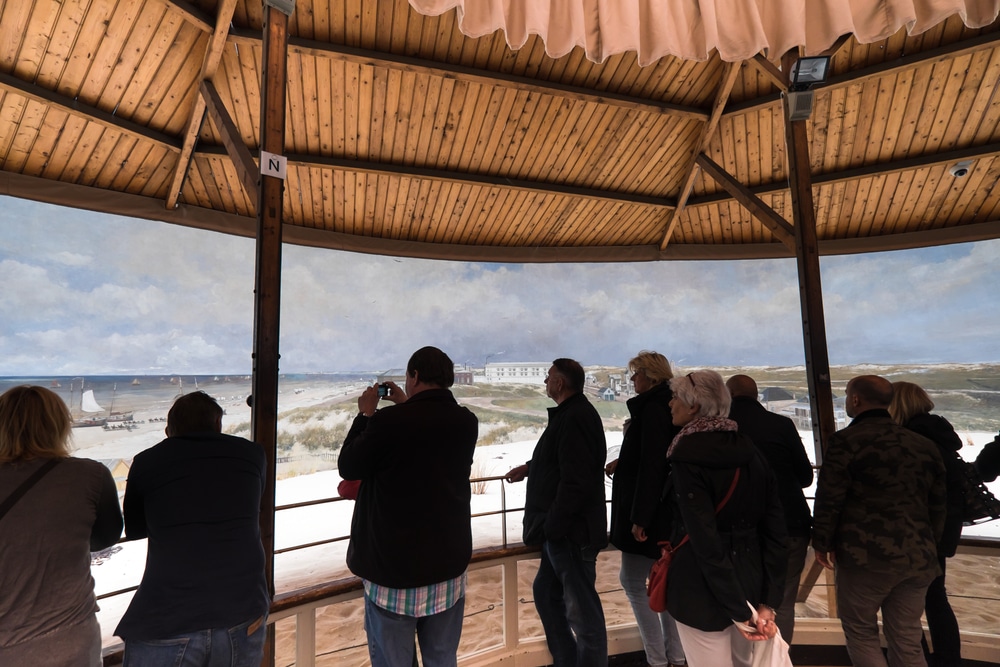 Source: Henk Vrieselaar / shutterstock
Source: Henk Vrieselaar / shutterstockThe most famous painter of the 19th-century Hague School, Hedrik Willem Mesdag was commissioned in 1881 to compose a panorama 14 metres high and with a circumference of 120 metres.
From the perspective of the dunes at Scheveningen, Mesdag’s work depicts ships in the North Sea, Scheveningen (then a modest fishing village) and The Hague rising in the background.
It is the world’s oldest panorama still in its original location, in a purpose-built hall with a foreground of artificial dune landscape around the viewing platform that blends seamlessly with the painting.
Mesdag completed this trompe-l’œil work in just four months, with help from a few other artists, including the future Amsterdam Impressionist George Hendrik Breitner.
10. Museum Voorlinden
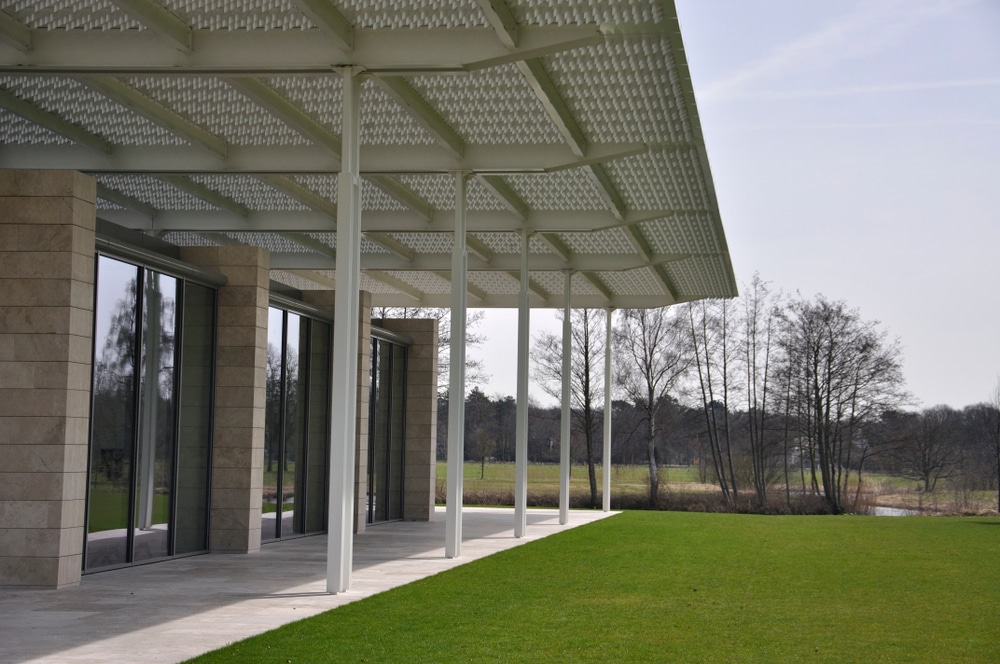 Source: drieshondebrinkfoto / shutterstock
Source: drieshondebrinkfoto / shutterstockKing William-Alexander was on hand in 2016 to inaugurate this museum showcasing the largest private art collection in the Netherlands.
Known as the Caldic Collectie, it was put together by the industrialist and art aficionado Joop den Caldenborgh.
The location for the museum is a delight, in verdant gardens on the historic Voorlinden estate a few minutes away in Wassenaar.
The building, designed by Dirk Jan Postel, merges with this environment, using sand coloured stone, glass walls and a cleverly designed glass roof that fill the galleries with natural light.
Parts of the collection have previously been shown at the Kunsthal and Boijmans Van Beuningen Museum in Rotterdam.
Some of the famous names represented in the collection include Ai Weiwei, Damien Hirst, Marcel Broodthaers, Ernesto Neto and Yayoi Kusama, while Richard Serra (Open-Ended) and James Turrell (Skyspace) have produced permanent installations for the museum.
11. Scheveningen Beach
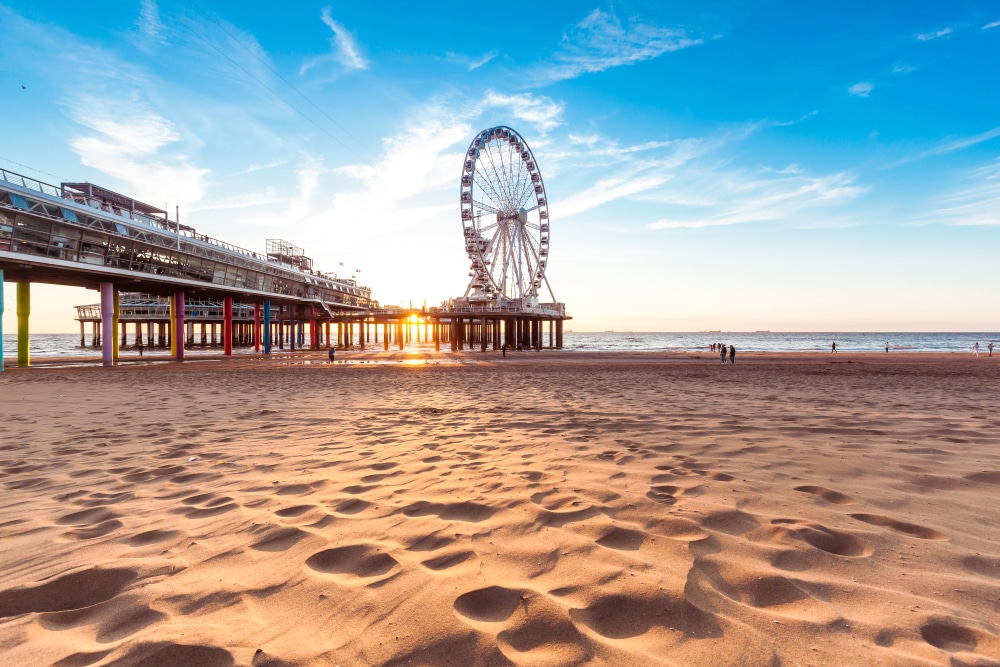 Source: fotolupa / shutterstock
Source: fotolupa / shutterstockWhen things heat up in summer it’s great to know that the beach is a few short kilometres away.
And it’s not just any beach either; Scheveningen is the Netherlands’ top seaside resort with a beach that seems never to end.
An annual Blue Flag winner, the beach is wide, sandy and backed by a promenade that abounds with shops, eateries and attractions.
There’s a sculpture museum, which we’ll come to next, as well as miniature golf, a SEA LIFE aquarium, an amusement centre, while the 1950s Scheveningen Pier has been given a new lease of life in the last few years.
Away from the resort the beach has a natural side, and a few minutes north you can hike or cycle in the largest interconnected dune area in South Holland at Meijendel.
12. Museum Beelden aan Zee
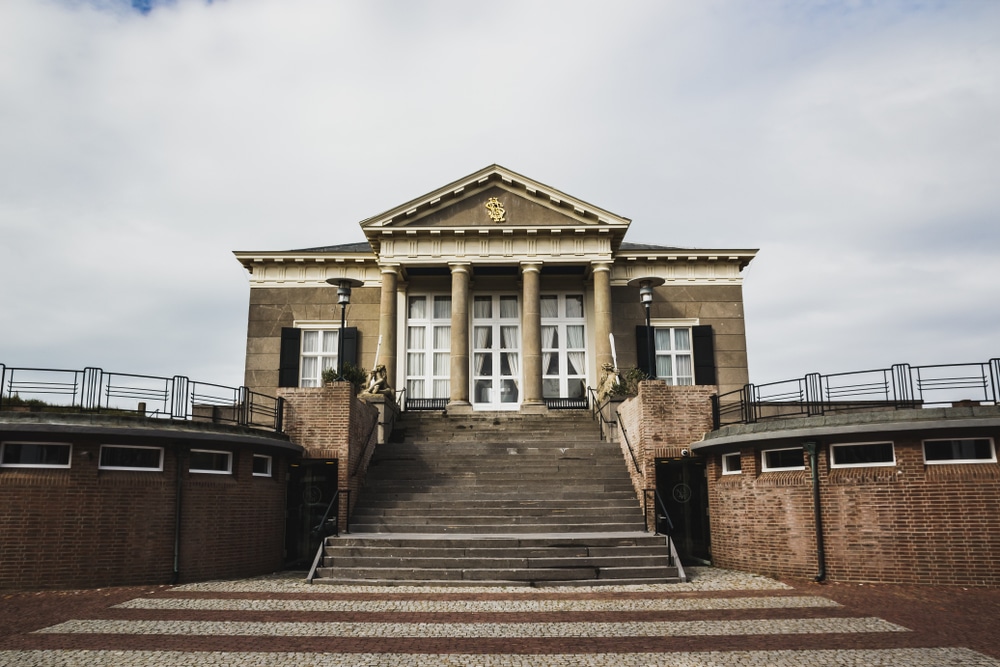 Source: Bas de Mos / shutterstock
Source: Bas de Mos / shutterstockHiding in the dunes at Scheveningen is the Netherlands’ only museum dedicated solely to sculpture.
The emphasis here is also on post-war modern work, and the main space, the Grote Zaal, hosts up to four exhibitions a year, arranged according to themes or individual artists.
The museum has a strong collection, endowed with pieces by Karel Appel, Fritz Koenig, Man Ray, Igor Mitoraj and Jeroen Henneman.
When the museum was being planned the Hague Municipality stipulated that the building must not interfere with the dunescape, so the exhibition space was built completely underground, with natural light provided by a glass roof.
Since 2004 there has also been a free admission sculpture park, by Tom Otterness, one of America’s most active public artists.
13. Scheveningen Pier
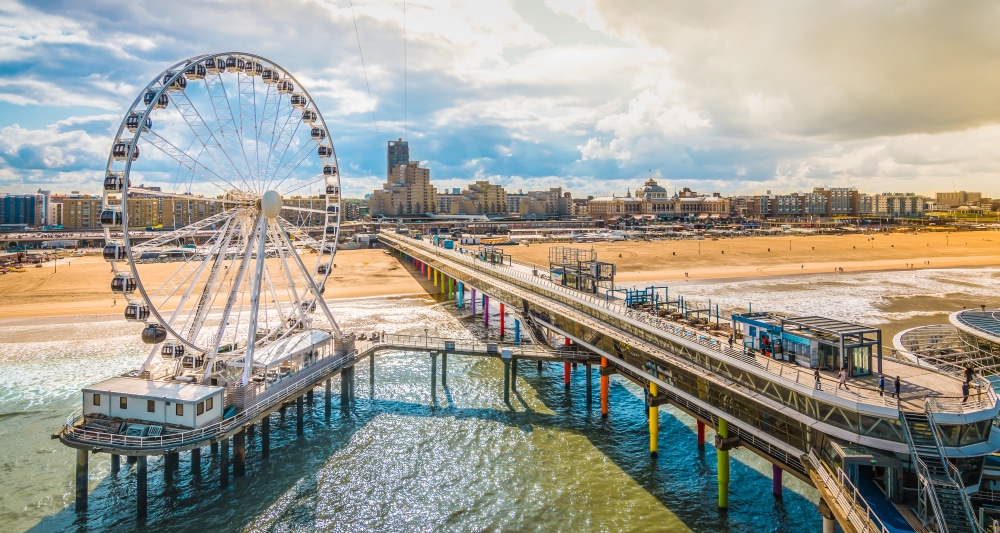 Source: NAPA / shutterstock
Source: NAPA / shutterstockAt the beach in Scheveningen you may find it hard to take your eyes off the pier, which has gone through a lot of regeneration in the last decade.
This Modernist structure, 382 metres long, was designed by Rotterdam architects Hugh Maaskant (designer of the mammoth Groothandelsgebouw) and Dick Apon.
The pier opened in 1959 and has a few distinct features, like two levels and a group of four platforms branching from the pierhead, known as “islands”. You can come to size up this unusual monument, and indulge in an ice cream, pancake, burger, or French fries from a paper cone.
There’s also a handful of shops on the pier, as well as an indoor play area for kids, a spa, a hotel, a new air-conditioned Ferris wheel and the “Bungy” tower.
Here, daredevils can bungee jump over the sea or ride a zip-line all the way back to the shore, reaching speeds of 90 km/h.
14. Mesdag Collection
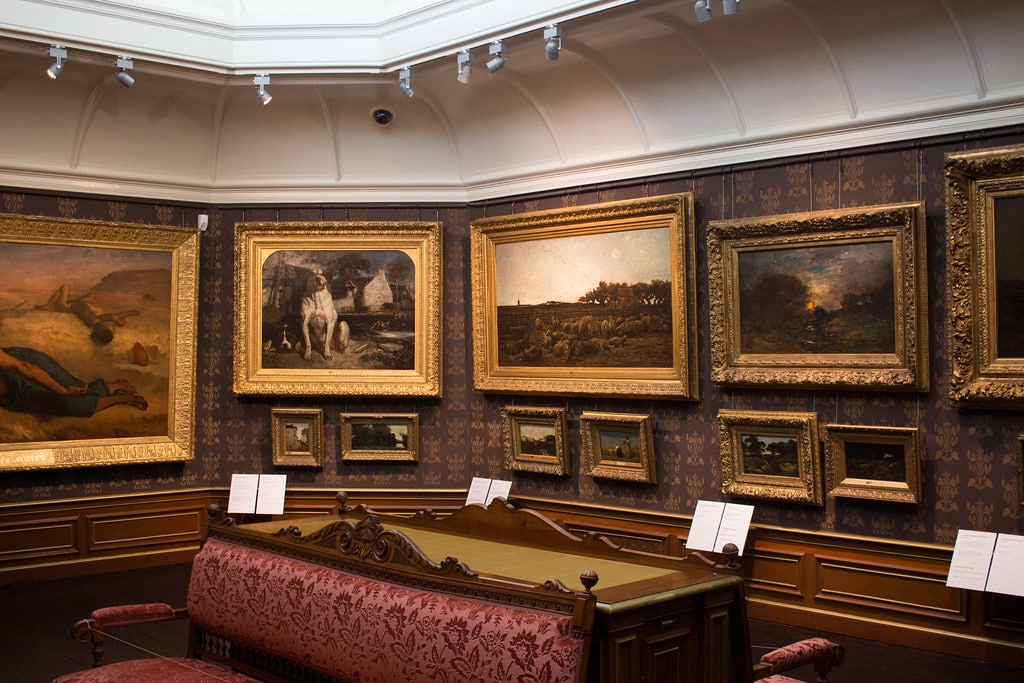 Source: hans s / Flickr | CC BY-ND
Source: hans s / Flickr | CC BY-NDHendrik Willem Mesdag and his wife Sina van Houten (also a painter) established this museum next to their house to display Mesdag’s work, but also the art that the couple collected in the course of the late-19th century.
Mesdag opened the museum in 1887 and donated it to the state in 1903. On show are paintings by other members of the Hague School, like Anton Mauve and Willem Roelofs, as well as lots of 19th-century French Realism from the Barbizon school, which inspired the Hague School.
You can admire pieces by Camille Corot, Jean-François Millet, Théodore Rousseau and Charles-François Daubigny, as well the great Eugène Delacroix.
Mesdag collected a wealth of sketches, ceramics and Japanese art, all on display.
15. Het Plein
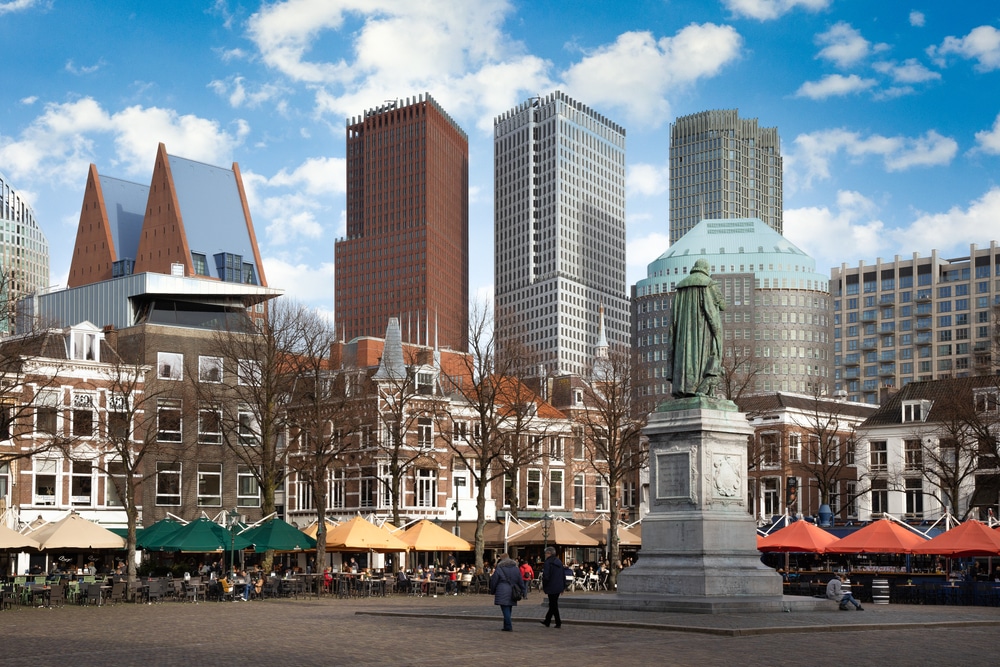 Source: Sjors Gijsbers / shutterstock
Source: Sjors Gijsbers / shutterstockWhen the Binnenhof was the residence of the Counts of Holland, what is now a dynamic city plaza was a vegetable garden for the palace.
Het Plein was laid out in 1632, taking inspiration from the groundbreaking Place des Vosges in Paris.
On the square’s west frontage are solemn former Government ministry buildings, now encompassed by the Tweede Kamer complex (House of Representatives). In the centre stands a statue for William the Silent, who led the rebellion against the Spanish Habsburgs in the 16th century.
The south and east sides of Het Plein are continuous rows of restaurants, bars and cafes, with terraces in front.
At the end of the working day government office types blow off steam here, and it’s nothing out of the ordinary to spot a minister passing by.
Into the night, some of these venues become nightclubs, so Het Plein buzzes with life at all hours.
16. Palace Noordeinde
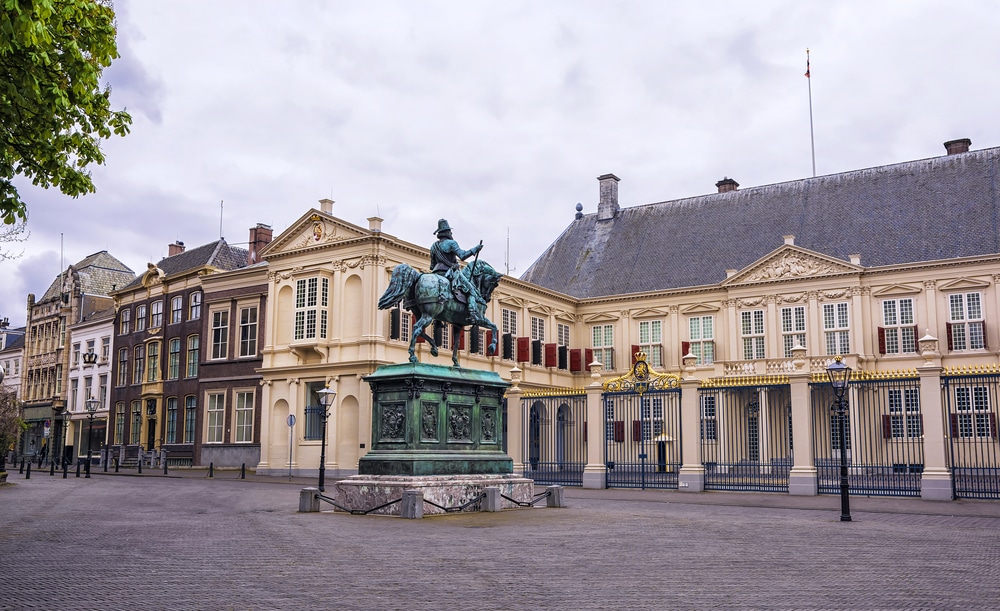 Source: MarinaD_37 / shutterstock
Source: MarinaD_37 / shutterstockA royal palace since 1609 when it was presented to the widow and son of William the Silent, Palace Noordeinde is used by King Willem-Alexander as a “working palace”. This makes sense because the building has an understated, business-like appearance.
If you aren’t paying attention as you potter along the chic Noordeinde shopping street you could even pass it by! The way is lined with Art Nouveau houses, taken up by antiques shops, snazzy fashion boutiques, design shops and galleries.
For some fanfare and regalia, be here on Wednesday mornings when the king often receives ambassadors’ letters of credence, in a ceremony that involves the ambassador arriving by horse-drawn coach to be greeted by a guard of honour and military band.
For details of the next presentation ceremony there’s a calendar online.
The Paleistuin park behind, now open to the public, was landscaped by the son of William the Silent for his mother.
17. Passage
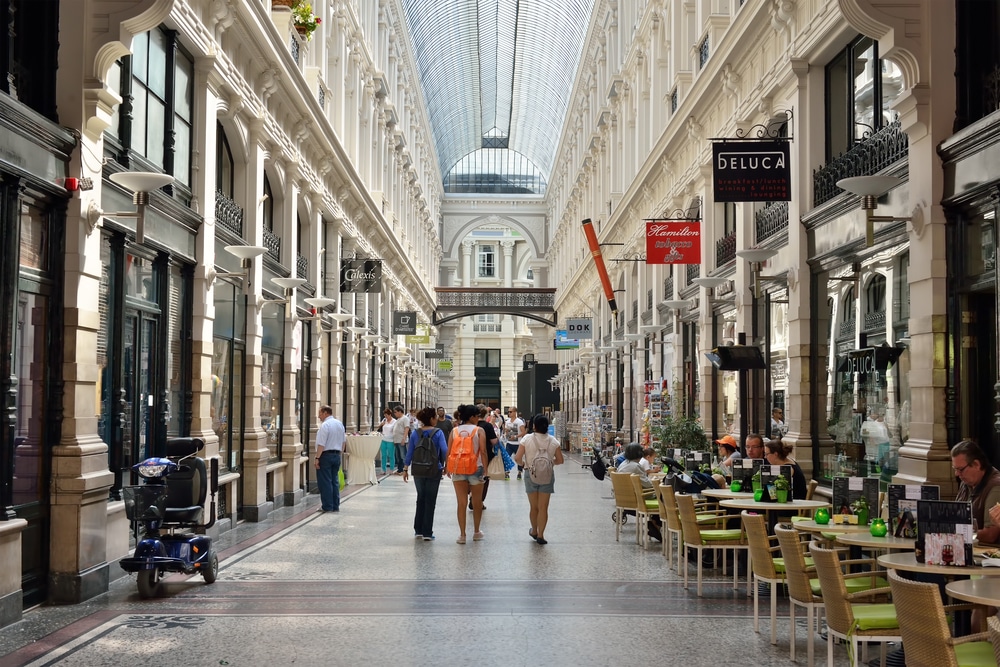 Source: skyfish / shutterstock
Source: skyfish / shutterstockThe Hague has the only surviving example of a 19th-century shopping arcade in the Netherlands.
With three converging halls, the Passage was designed along the lines of Paris’s Passages Couverts and was completed in 1885. There are cafes, boutiques, jewellers, galleries and confectionery shops in this opulent setting, so you can do some high-end shopping and admire the soaring glass dome and the floor mosaics as you go.
Architect Bernard Schumi was hired to create a modern extension into the city’s main shopping area between Grote Marktstraat and Spuistraat, with a ceramic facade intended to evoke Delftware pottery.
18. Westbroekpark
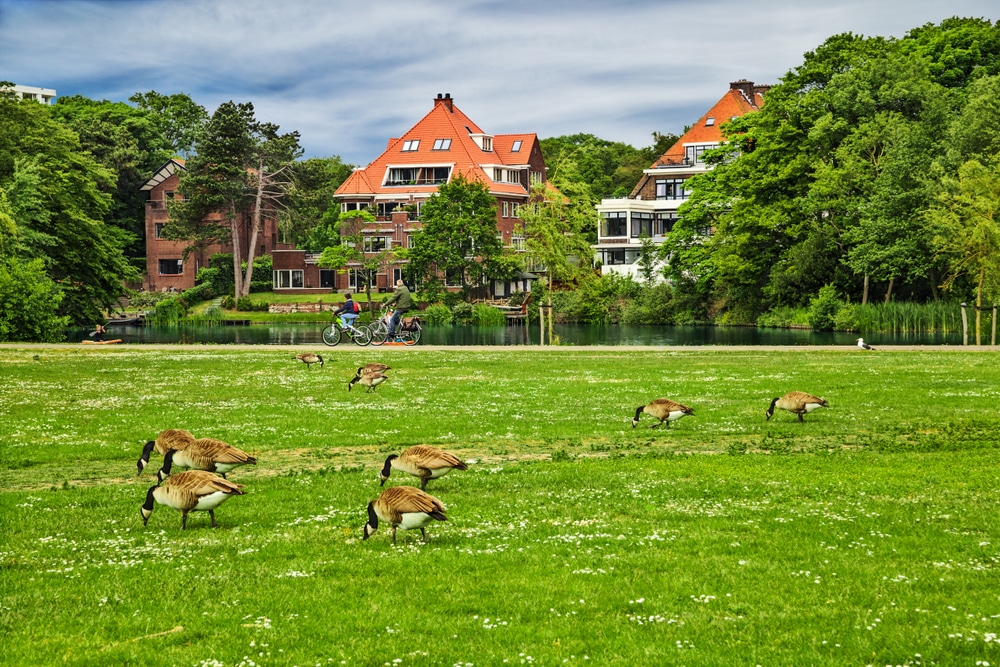 Source: leventina / shutterstock
Source: leventina / shutterstockBetween Madurodam and Scheveningen, the Westbroekpark is an 18-hectare urban park in the Dutch equivalent of a conservation area.
The sculpture garden here merits a visit alone, and has pieces by major Dutch 20th-century sculptors like John Rädecker, Wessel Couzijn, Piet Esser and Jos van Riemsdijk.
The rosarium is also exceptional in summer, growing 20,000 bushes from 300 varieties and the venue for the Hague International Rose Trials on the second Thursday of July each year.
For refreshment there’s a restaurant with a wok buffet and a tearoom in an idyllic glade beside a waterway where you can hire a rowboat.
At the start of September the Westbroekpark becomes one big al fresco restaurant for the annual Festival TREK street food event, with a world of casual dining from vegan delights to sushi and Surinamese.
19. Prison Gate Museum
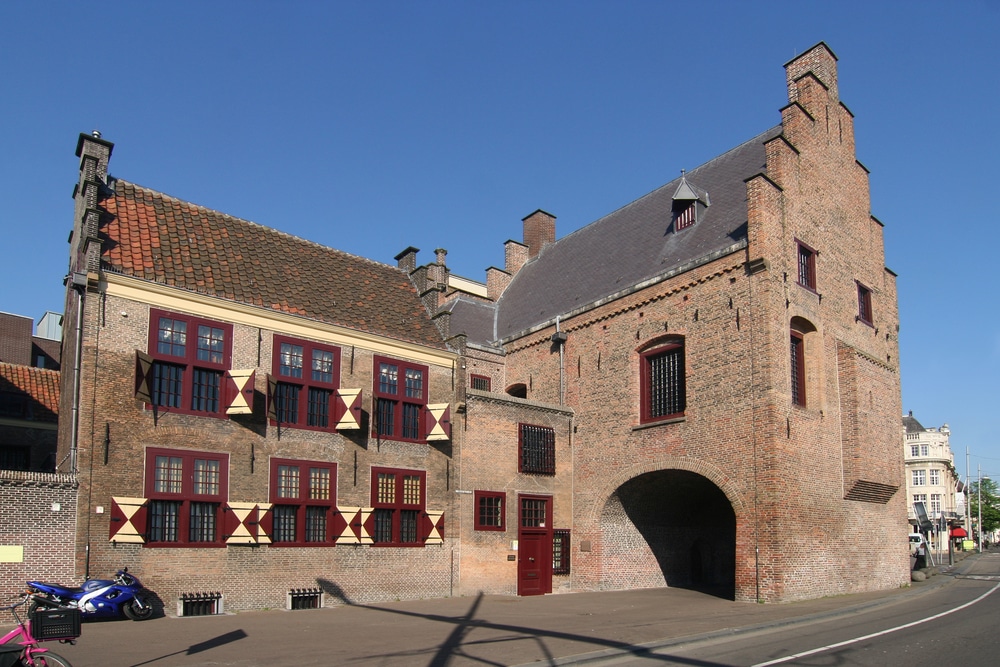 Source: jan kranendonk / shutterstock
Source: jan kranendonk / shutterstockAt the division between the Buitenhof and Binnenhof, the Prison Gate Museum lifts the lid on crime and punishment in the Hague in Medieval times.
With its crow-stepped gable, the Prison Gate cuts an impressive shape beside the Hofvijver, initially serving as the main gateway to the castle for the Counts of Holland, before becoming the feared prison for the Court of Holland.
It was here in 1672 that one of pivotal events in Dutch history took place when the statesman Johan de Witt was lynched, along with his brother Cornelius in the mayhem that followed the invasion of the country by France, England and a German alliance.
You’ll enter the cells, find out about some of the punishments that were handed out, and discover the differences in treatment for wealthy and poor prisoners.
One of the country’s largest collections of antique corporal punishment and torture devices helps paint a macabre but interesting picture of justice down the years.
20. Het Strijkijzer
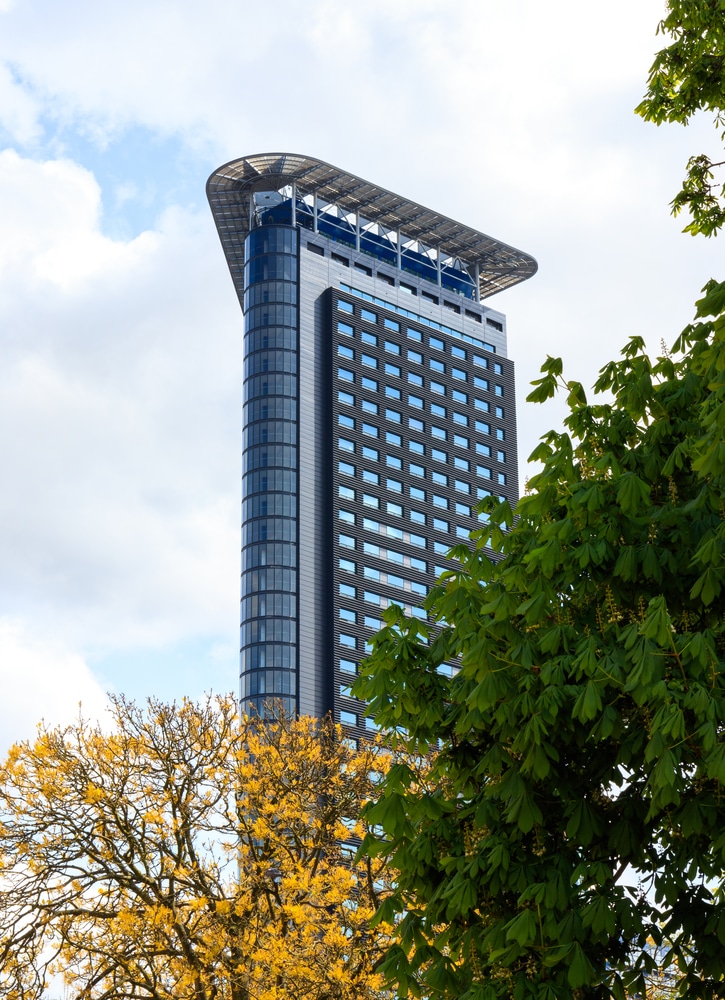 Source: Z. Jacobs / shutterstock
Source: Z. Jacobs / shutterstockHet Strijkijzer (The Iron) is the third tallest skyscraper in The Hague and sprang up in the mid-noughties.
Standing 132 metres tall, the 42-storey tower is purely residential, combining luxury apartments with affordable units for first-time buyers.
The name Het Strijkijzer refers to a clothes iron, and comes from the tower’s unusual triangular footprint, which is actually based on New York’s famous Flatiron Building.
From 12:00 to 22:00, seven days a week you can catch the elevator to the 42nd floor for views stretching 45 kilometres, encompassing The Hague’s cityscape, Scheveningen, ships on the North Sea, Delft and Rotterdam.
A visit to the observation deck, known as the City Balcony, comes free with lunch, dinner, or “highest” tea at the Penthouse Restaurant.
Alternatively you can buy a voucher at the downstairs reception, giving you access to the City Balcony and one free drink at the Sky Bar.
21. Japanese Garden in Clingendael Park
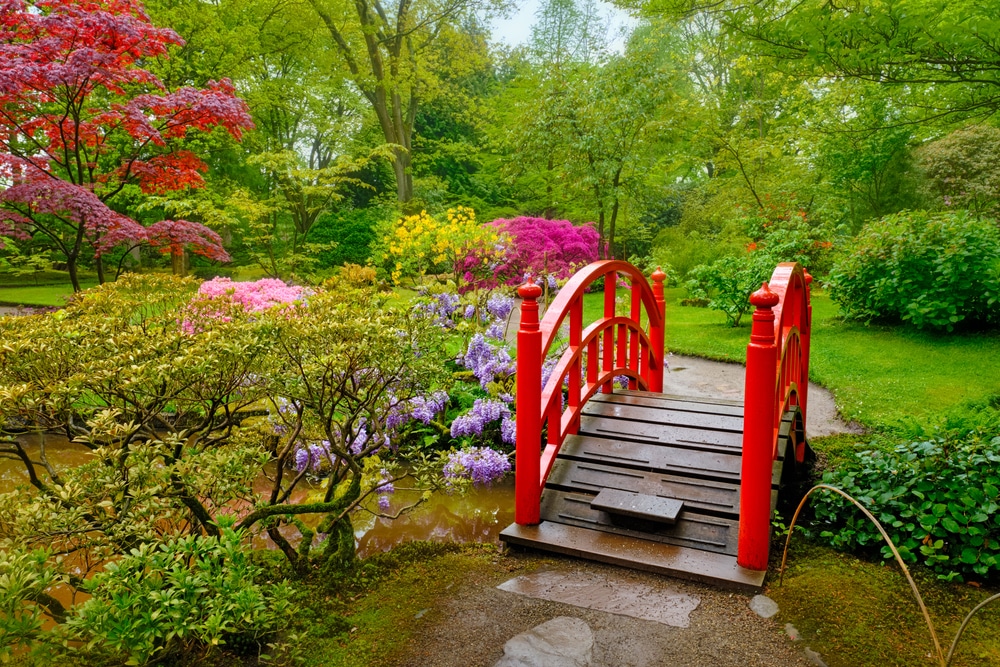 Source: Dmitry Rukhlenko / shutterstock
Source: Dmitry Rukhlenko / shutterstockOn the Clingendael Estate there’s an enchanting Japanese garden, so delicate that it only opens for a total of eight weeks a year.
These times are roughly six weeks through May to the middle of June and then the two weeks up to the end of October.
The garden was planted in the 1910s by Marguérite M. Baroness van Brienen (Lady Daisy) who travelled frequently between the Netherlands and Japan, bringing with her ornamental bridges, sculpture, lanterns, a water cask and even (it is thought) the picturesque pavilion.
There’s a small shrine to the Buddhist saint Jizo, and two water basins, one adorned with four Buddhas and the other in shape of a lotus flower.
In spring the blossom is stunning, while the moss in autumn brings many shades of green.
22. Malieveld
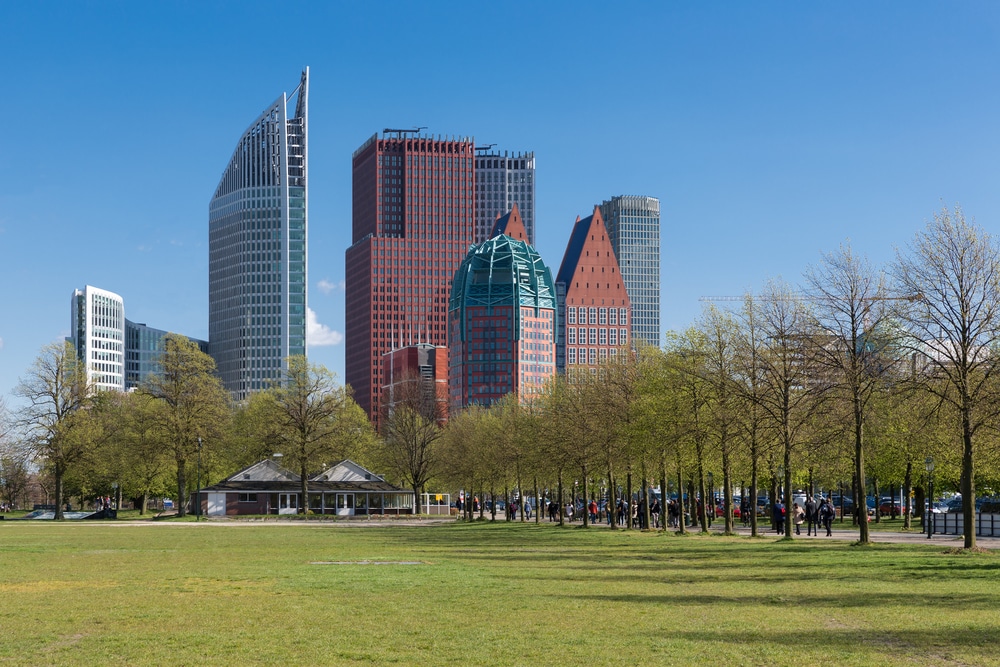 Source: T.W. van Urk / shutterstock
Source: T.W. van Urk / shutterstockTen hectares of greenery opposite the Centraal station, the Malieveld is a place where funfairs (King’s Day – 27 April), festivals, outdoor concerts and markets go down all year round.
The Rolling Stones, Coldplay and Bruce Springsteen have all played to bumper crowds here.
And if there’s a political protest or rally, you can be sure that it will be happening on Malieveld – in 1983 the largest peaceful protest in Dutch history took place here against the placement of nuclear weapons on Dutch soil.
But when there’s nothing on the calendar you can visit to see the deer grazing in their paddock, and head to the pavilion to treat yourself to a pancake or some poffertjes (mini-pancakes served with powdered sugar and butter).
23. Haagse Markt
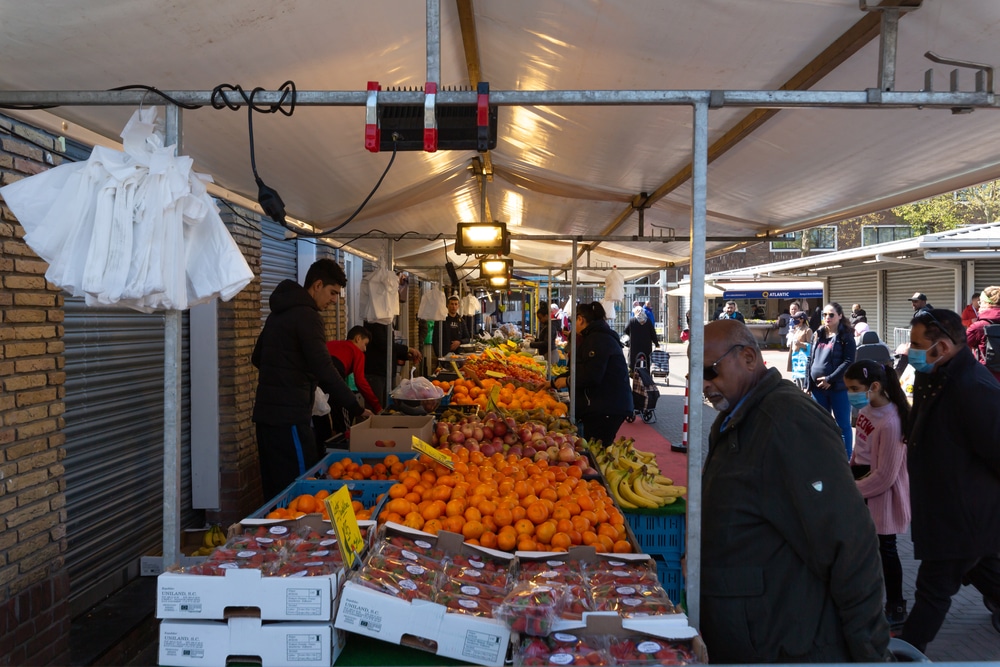 Source: Emmanuel Nalli / shutterstock
Source: Emmanuel Nalli / shutterstockThe largest market in Europe after the Porta Palazzo in Turin, the Haagse Markt has 500 permanent stalls, on an area large enough to cover three football pitches and attracting up to 60,000 shoppers on a given day.
The main draw at this highly multicultural market is the food, which might be fresh seasonal fruit, herbs and vegetables from the Netherlands, fish, bread and cheese, or exotic specialities from around the world like olives, dates, Chinese tea, dulce de leche, baklava, persimmon, dried fruits, pine nuts and spices.
The Haagse Markt was renovated in 2015, leaving it with new canopies and an even larger selection of hot food, from empanadas to falafel.
24. Duinrell
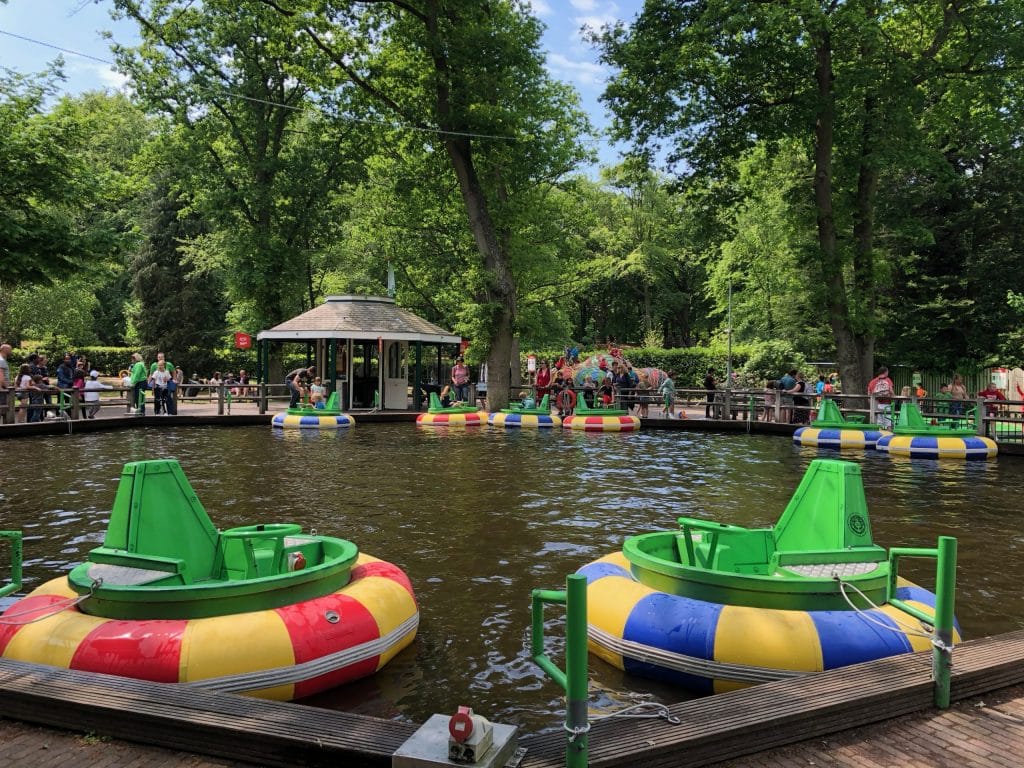 Source: Hanno Lans / Wikimedia | CC0
Source: Hanno Lans / Wikimedia | CC0If a family excursion is in order, there’s a popular amusement park in a converted dune landscape around 10 kilometres out of the city.
Duinrell first opened in 1935 on the estate of the counts of Van Zuylen van Nijevelt and one its big attractions is the Tikibad, an indoor tropical-themed waterpark, with a lazy river and the longest flumes in the Netherlands.
The main park at Duinrell is open from mid-April to the end of October, and offers more than 40 rides and amusements like a dune toboggan, the Mad Mill spinner, a splash ride, bumper boats, a swinging ship and a cycle monorail.
For adrenaline, Waterspin tips 40 passengers upside down at the same time and the Falcon rollercoaster has corkscrews and loops.
Littler visitors can explore the ball lake and Rick’s Fun Factory, a big indoor playground.
25. Familiepark Drievliet
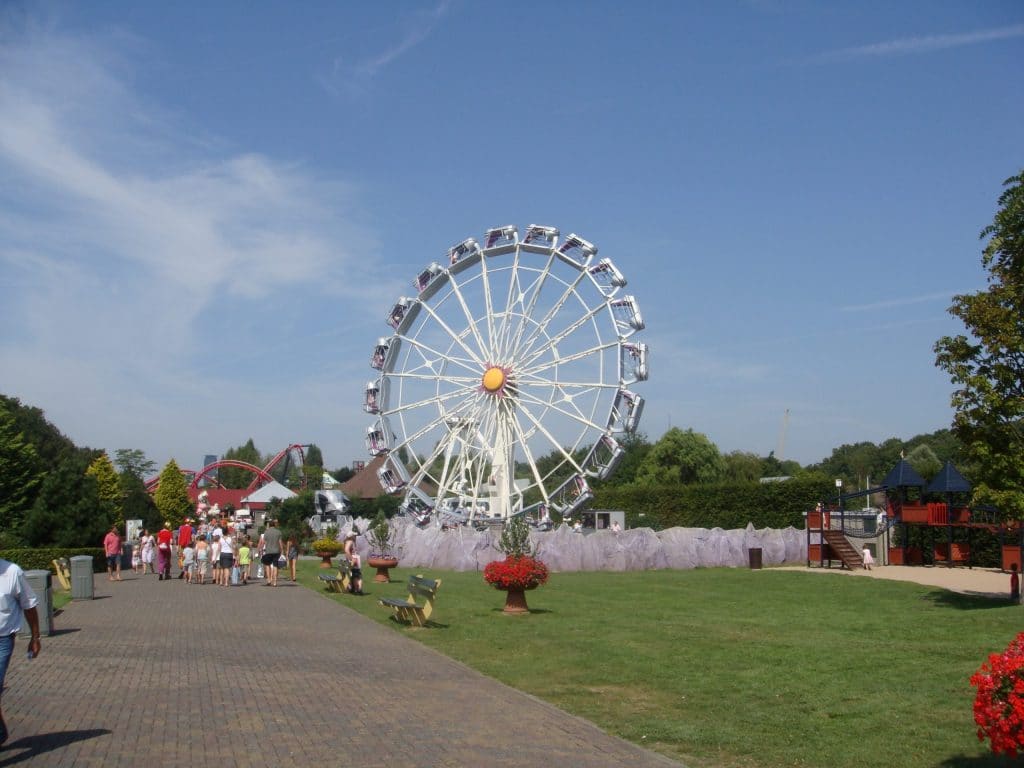 Source: milst1 on Flickr / Wikimedia | CC0
Source: milst1 on Flickr / Wikimedia | CC0At the junction of three canals, Drievliet is an amusement park also aimed at families.
The park opened in 1938 and has steadily added more rides and attractions down the years, from rollercoasters to carousels, a log flume, Ferris wheels, bumper cars and spinners.
Some highlights for young thrill-seekers are the high-speed Twistrix, the Chute (drop ride), Dynamite Express rollercoaster or De Piraat rocking ship, to name just a few.
Smaller children are well-catered for, with attractions like Old MacDonalds Tractorrit (tractor ride on a rail) and a host of gentler rides at the tropical-themed Lol Atol.
For shows there’s a 5D theatre, a computerised Jungle Show for small children and interactive demonstrations in the open-air Parktheater, where kids can take part in fun scientific experiments.